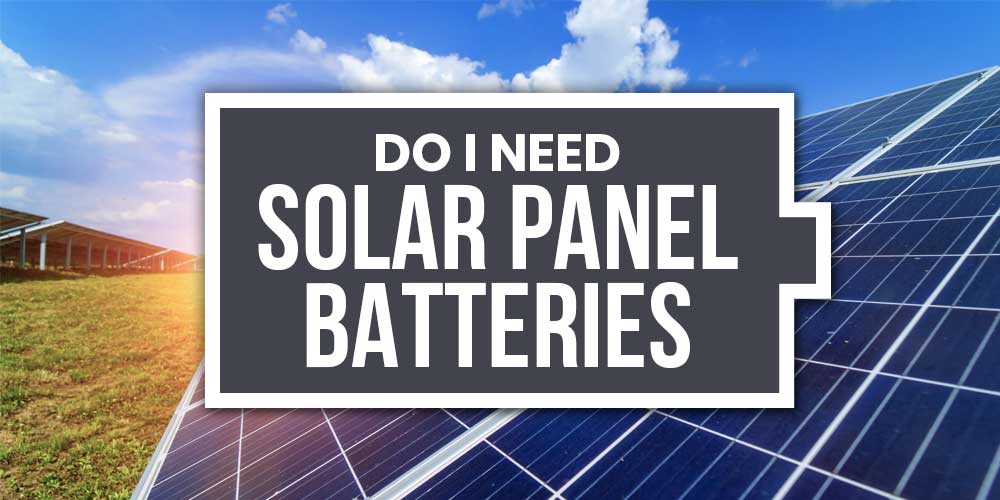
NAVIGATION
Imagine you’re in the middle of the biggest storm of the season and your whole neighborhood has lost power. Luckily, you’re still able to watch TV, heat up your dinner, and check in online, all thanks to your solar battery bank.Whether or not you need batteries for your solar panel system is an extremely common question, especially for folks who are just getting started with solar. But this is a simple question with a complicated answer, so I wanted to share some of what I’ve learned.

Hi, I’m Ryan
Living off the grid with solar has been my life for the last decade. I’ve learned a lot about this way of living and batteries are at the core of making that happen. Here’s what I’ve learned.

Do I Need Batteries For My Solar Panel System?

Not all solar panel systems need a battery backup to work effectively, so how do you decipher if you need one? There are so many benefits to using a solar power battery bank, like grid independence, energy security, and lower electricity bills. However, this doesn’t mean batteries are required to go solar.
In my opinion, battery backups are the way to go. A solar battery bank can help you avoid pulling expensive electricity from the grid when your solar panel system isn’t generating enough power to meet your needs, which helps offset the initial cost of batteries, particularly if you have variable power rates with your energy provider.
Solar battery backups will likely reduce your carbon footprint, reduce your electricity bill, and help you gain energy security should the grid short circuit.
Are Solar Batteries Worth It?

Just because battery backups are great for me doesn’t mean they’re great for everyone. In order to decide if you need batteries for your solar panel systems, it is important to understand what battery backups actually do.
As a general rule of thumb, experts say that home batteries are financially “worth it” when any two or more of these conditions are met
- You experience power outages
- Your peak and off-peak utility power rates differ
- You qualify for cash incentives for installing a battery
- You are installing batteries alongside a home solar system
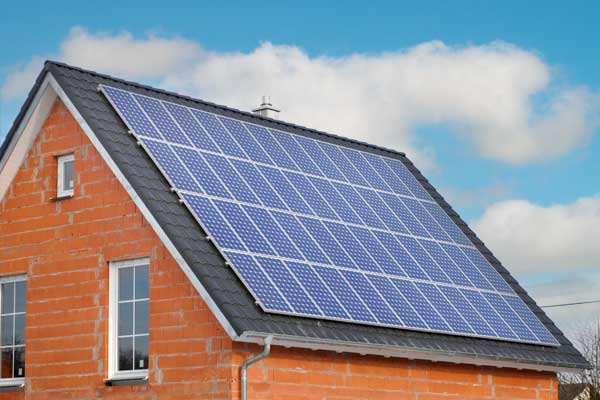
When it comes down to the numbers, you often have to make a decision about batteries based on financial realities. In some cases, the return on investment (ROI) is short and then you’re saving money every month after recouping your initial investment.
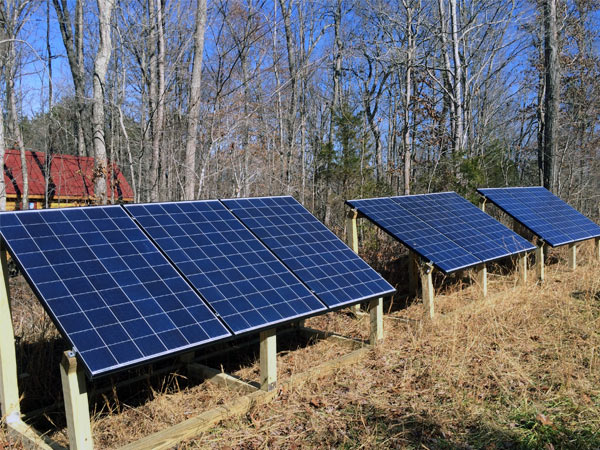 The power company wanted to charge me $15,000 to run a power line to my home. Instead, I spent that same money on a solar array and batteries, which was an instant ROI, and I haven’t had a power bill since. Crunching the numbers, that’s $25,000 I didn’t have in power bills since I went solar!
The power company wanted to charge me $15,000 to run a power line to my home. Instead, I spent that same money on a solar array and batteries, which was an instant ROI, and I haven’t had a power bill since. Crunching the numbers, that’s $25,000 I didn’t have in power bills since I went solar!
In other cases, you might realize that instead of batteries, you could just buy more panels and sell the excess power back to the power company. Then you can use those credits when batteries would normally help, using “the grid” as a quasi-storage system.
For me, being off the grid, batteries were required since I didn’t have a grid to pull from. But even if I were grid tied, batteries would be a cost I’d shoulder because it makes life much more comfortable.
Do Solar Panels Work During A Power Outage?

I can’t tell you the number of times that I’ve gotten a call from one of my neighbors asking if they could come charge their phones because the power had been out for a while and I had no idea! My air conditioning would be running, I was watching a movie and cooking dinner like nothing had happened.
The magic of the battery backup is that your power can be accessed even when the grid fails. When your home doesn’t need all the energy being produced by your panels, the excess energy is automatically stored in the battery bank to be tapped into at any time.
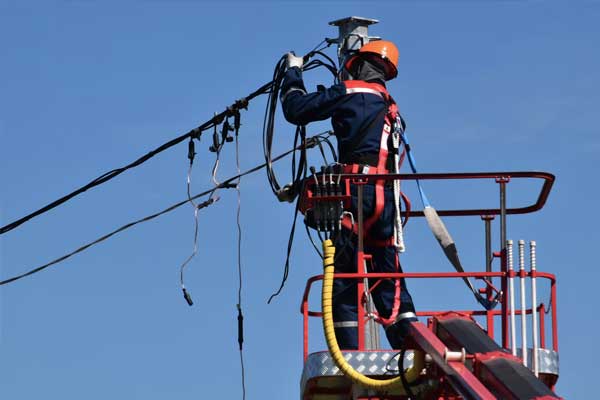 If your panels are connected to your local utility grid and it goes out, they are designed to stop funneling power so that the power doesn’t feed back into the grid. When the grid fails due to a natural disaster, overload, or maintenance work, your panels will stop producing energy in order to protect utility workers fixing the lines.
If your panels are connected to your local utility grid and it goes out, they are designed to stop funneling power so that the power doesn’t feed back into the grid. When the grid fails due to a natural disaster, overload, or maintenance work, your panels will stop producing energy in order to protect utility workers fixing the lines.
There are only two ways to continue to get power from your solar panels during a grid outage: using a battery or using an inverter with battery capacity. The only inverter type I know of with the capability to keep your lights on during an outage is the Enphase IQ8s.
When you add a solar battery backup to your solar PV system, you will still be able to access electricity in your home even when your neighborhood is suffering from a power outage. This is because the battery backups literally store energy for your home to access, independent of your city’s main grid.
How Do Solar Panels With Battery Storage Work?

If solar battery banks are so magical, how do they actually work? A battery system regulates the flow of electricity during an outage, allowing your solar array to stay powered, and by storing excess energy when more is being generated than the demands of the home.
Your solar panels take in the solar energy from the sun and convert it to DC power. That DC power then flows to the charge controller, which regulates how much power is stored in your battery backups and how much goes to your inverter.
Your charge controller saves your battery backups from overcharging or over discharging electricity. When the energy is discharged, it goes to your inverter. Then, your inverter converts the DC power to AC power, which your house is able to use. This is the flow of power for systems with DC coupled batteries.
However, some systems are AC coupled or have their own inverter solution, in which case the DC power moves from your panels into a solar inverter, then a battery inverter, and then straight into your battery bank. From there, the power flows through another battery inverter, and is then discharged as useable energy in your home.

Whether or not the battery bank is installed in the circuit before or after the inversion to AC is dependent on the type of battery and inverter that you use. Both setups certainly have their own pros and cons.
Is Solar Power Battery Backup Right For Me?

One thing I wish I knew before going solar is that the decision to do so is actually made up of many smaller decisions. There’s the decision of going on or off grid, backing up with batteries or a generator, type of inverter, charge controller, and batteries you’ll use, how many batteries to buy, and much more.
I’ve ground mounted 15 panels on my property that are backed up with flooded lead acid batteries, but I didn’t come to that decision overnight. I did a ton of research to understand what method would be best for me.
These decisions are often navigated more easily with the help of a local solar provider. They understand a lot of these details, are familiar with your local codes, and can help you make the right decisions.
Grid Tied Solar Vs Off-Grid Solar

It’s a common misconception that using solar panels means you’ve gone off grid. In actuality, you can use solar panels both on and off the utility grid.
With the off-grid method, battery banks are required to store solar energy. However, batteries are still an option with the grid-tied method if you want to reduce your dependency on the grid without disconnecting fully.
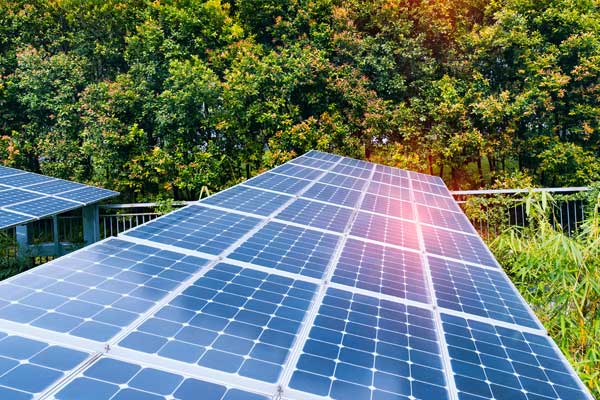 The primary difference between grid-tied solar and off-grid solar is where your solar panels store their energy. With the grid-tied method, the energy your solar panels create is fed into the utility grid and is used to generate electricity for homes in your area.
The primary difference between grid-tied solar and off-grid solar is where your solar panels store their energy. With the grid-tied method, the energy your solar panels create is fed into the utility grid and is used to generate electricity for homes in your area.
In return for feeding your solar energy into the main grid, you’ll receive credit that you can access anytime. This is how you “store” energy to use when your panels are no longer getting sun in the middle or the night or on an especially cloudy day.
The main setback with grid-tied solar panels is that you’ll be affected by power outages. If the main grid goes down, your grid-tied system will shut off in order to prevent energy from feeding into the system and potentially harming utility workers. However, many folks find this easier than having to invest in and keep track of battery backups.
The more common method for storing solar energy is going entirely off grid, but make sure you’re ready to take this leap before deciding to disconnect. In some cases, you may be required to remain on the grid by local authorities.
With off-grid solar, you aren’t using grid connection to store extra energy, so backup batteries are required. The main reasons I see friends lean toward the off-grid route are avoiding power outages, lowering electricity prices, and having less involvement from code enforcement. For me, the off-grid method was really the only way to go because of where my house was located.
Backup Generators Vs Solar Battery Backup

Another core decision when installing solar is what method you want to use to back up your home electricity for those moments when your main system fails. Backup methods are highly recommended to produce greater energy independence and generally be prepared for power outages or solar panel failure.
There are two main ways that people tend to back up their electricity: a whole-home generator and a solar battery backup system. I used a portable backup generator for the first two years I used solar panels. Later I opted to upgrade my system because portable generators require more maintenance that I cared for.

“We recommend battery backups over a generator. Battery will instantaneously kick on and supply the critical loads for the home. Gas or oil burning generators often take some time to turn on.”
– Matt C., EnergyPal
Backup generators provide electricity by burning a fossil fuel like natural gas or propane. Some backup generators turn on automatically when an outage is detected, while others are turned on manually. Some higher end inverters will have an automatic start for generators when your batteries get below a certain threshold.
Depending on your setup and budget, it can go either way. I honestly prefer the solar battery backup method over a backup generator, but a combination of the two is even better.
Benefits Of A Backup Generator
- Backup power on demand
- Can utilize existing gas line
- Low installation costs
- Can be added to any home
Disadvantages Of A Generator
- Noise
- Will incur gas costs
- Maintenance
- Burns fossil fuels
The solar battery backup method is totally different and is what I tend to recommend for those going solar. Batteries will store and disperse the renewable electricity generated by your solar panels.
Solar battery storage makes sure that your house uses as much of the renewable electricity coming from your solar panels as it needs. They can be used when your panels have low solar output, like at night or on an especially cloudy day.
Pros Of Solar Battery Backup
- Low maintenance
- Detects power outages
- Decreases your carbon footprint
- Qualifies for solar tax credit
- Quiet operation
Cons Of Solar Battery Backup
- Higher cost
- Less predictable
- Battery lifespan ends
- Installation costs
- Poorer charge retention
Choosing The Right Inverter To Work With Battery Backups

Whether you choose to go on or off grid with your solar system, it is vital that you have a high-quality inverter. Your inverter is the apparatus that’s in charge of creating power that you can actually use in your house. It does this by transferring the high voltage DC power from your panels into AC power that is safe and useable in your home.
So, how do you make sure you’ve chosen the best inverter for your panels?
Inverters come in size ratings, measured in watts. As a very basic rule of thumb, you want your inverter to roughly match your solar panel wattage. This means if you have a 2000-watt solar panel system, you’ll need at least a 2000-watt inverter to successfully convert your DC power to AC power.
It’s also a good idea to give yourself some wiggle room incase you want to add some more panels later. If you’re choosing a good quality inverter from any of the name brands, you’re going to have a “smart” inverter, meaning it will be able to dynamically adjust as needed up to a certain level.
Inverters typically have a typical load rating that it can handle constantly and then a spike/peak rating that can handle higher wattage for short periods if there are any surges.
Once you know the wattage needed for your inverter, you can look into which type of inverter to invest in. Inverters for solar panel systems can be broken down into three basic types. A string or single inverter will need enough wattage to cover all of your panels, while a microinverter system only needs enough wattage for the panel it’s connected with.
Inverter Types:
- Micro-inverters (Grid tied)
- String inverters (Grid tied)
- Hybrid inverters (Off grid)
What Are Microinverters?

A microinverter is, as can be inferred from the title, the smallest kind of inverter. A microinverter is about the size of a DVD player and can handle energy conversion of one to two solar panels (about 120/230V, 60Hz of AC power).
They’re called microinverters due to the fact that the conversion from DC to AC power is done by several small inverters as opposed to one large inverter handling the entire load. There are many advantages to choosing this route as your solar inverter of choice.

“We recommend microinverters, as they allow maximum energy production during the times of partial shade, have great warranties, and are proven in the residential space.”
– Matt C., EnergyPal
Microinverters have many advantages in any size home. For one, micro-inverters are easily grid-tied, so you don’t have to disconnect from the grid to use them.
Another plus is that if one inverter in your micro-inverter fails, it will not disrupt your entire system and will continue to power your home, which would not be the case with a string inverter.
What Are String Inverters Or Central Inverters?

Grid-tied string inverters, also called central inverters, are the most popular type of inverter for a solar panel system. Many folks like this inverter type because of the way it streamlines clean AC power straight to the electricity grid.
Additionally, grid-tied string inverters allow self-consumption of your solar electricity in your panels. They’re about the size of a bread box and are mounted to your wall. String inverters are also connected to the utility grid and to the house power circuit, so you don’t have to go off grid if you don’t want to.
Another reason many people like this option is the price. String inverters tend to be the most affordable option when you take all elements into consideration. Smaller solar panel systems may find a more expensive microinverter to be worth the increase in price, but for medium-sized or larger homes, a string inverter is the way to go.
While string inverters are good for many applications, I still often suggest people make the leap to the third type of inverter.
What Are Hybrid Inverters?

The third type of inverter is the hybrid inverter, which is the type I use (Schneider SW 4024 Inverter). Hybrids are strategically designed to deliver AC power off the grid and protect your home from electricity loss or power outages. Hybrid inverters always require a battery for electricity storage, as it doesn’t store any power in the utility grid.
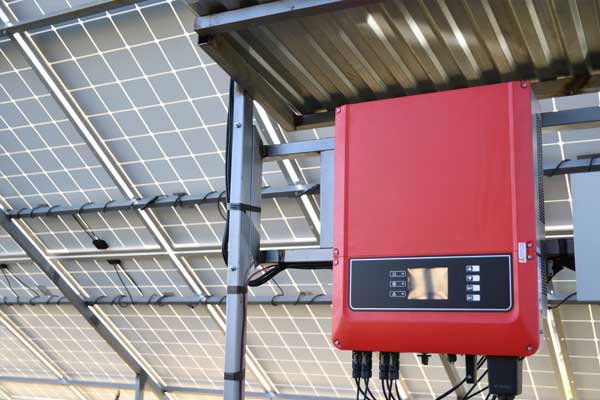 Hybrid inverters are the most intelligent type of inverter out there, because they’re designed with the ability to regulate the charge and discharge current of the battery on its own. Just like with a grid-tied inverter, hybrids take DC electricity from your solar panels and convert it to AC power.
Hybrid inverters are the most intelligent type of inverter out there, because they’re designed with the ability to regulate the charge and discharge current of the battery on its own. Just like with a grid-tied inverter, hybrids take DC electricity from your solar panels and convert it to AC power.
However, hybrid inverters go a step farther. They have their own magic touch, as they’re able to feed DC power into the battery during charging.
This means that if your panels are not getting enough energy from the sun, the inverter picks up on that and automatically pulls extra DC electricity from the battery, converting it into AC power your house can use.
Many of these inverters also have the ability to start up a whole house generator when your batteries get too low. They can handle a wide range of setups and, in my opinion, are worth the investment.
It’s important to note that you can’t just swap a string inverter with a hybrid inverter, as they require different wiring. However, if you can swing the extra cost, hybrid inverters can end up being worth your while. They provide power backups when the electricity grid fails and solve issues stemming from renewable energy variability.
Does Solar With Battery Storage Use Charge Controllers?

When I first made the decision to go solar in my own tiny house, I was confused as to whether or not I actually needed a charge controller. Not all panel systems need them.
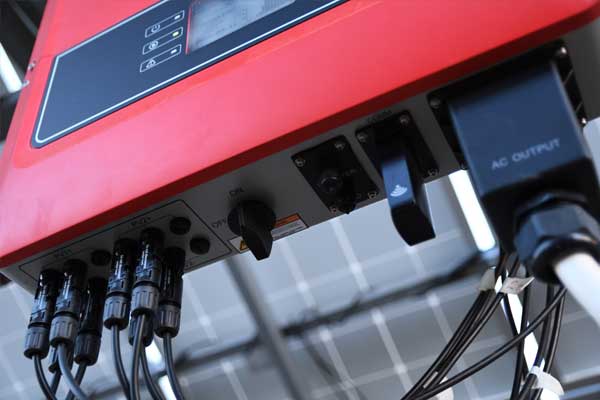 The distinction is this: If you have batteries, you’ll need to have one because a charge controller manages them.
The distinction is this: If you have batteries, you’ll need to have one because a charge controller manages them.
I liken a charge controller to an amusement park ride operator for your solar panel system. A ride operator regulates how many people can board the ride before it reaches max capacity. Similarly, a charge controller regulates how much energy can be safely stored in your battery backups and how much can be fed to your home through an inverter.
If you aren’t relying on battery backups, a charge controller isn’t necessary. They’re best used with battery backups such as for van life or a small, off-grid tiny home.
Choosing The Right Charge Controller For Solar Panel Batteries

If you are using a solar power battery bank for home, you’ll want to choose a charge controller that can give your batteries as long a life as possible by preventing them from overcharging or discharging too much power.
There are two types of charge controllers:
- Pulse width modulation (PWM)
- Maximum power point tracking (MPPT)
The PWM is an older style and costs less, but it’s not as efficient the MPPT. MPPT charge controllers are the most common these days and can gain you up to 30% more power than the PWM controllers, so I would recommend going with the MPPT.
At the end of the day, both will work fine with your solar panel batteries, but the MPPT is worth the investment. Once you decide between the PWM and the MPPT, you’ll need to figure out the amperage needed for your charge controller.
Calculate Amperage With:
- The wattage of the solar array
- The battery bank voltage
Use this formula to calculate the amperage
Watts / Volts = Amps
Take the total watts of the solar array divided by the voltage of the battery bank. This will give you the output current of the charge controller that you need.

“Always make sure you have a charge controller that is large enough to handle the amount of power and current produced by your panels.”
– Matt C., EnergyPal
If you don’t feel comfortable doing this on your own, you can typically find a sizing tool on the manufacturing website to make sure you’re on the right track. You can also call the company if you don’t see the info online or want to speak to a real person.
After you figure the type and size you’ll need, it just comes down to brand. There are so many makes and models of charge controllers out there.
I use the Schneider MPPT 60 Charge Controller for my panels. I found it to be super easy to install and it was part of the same product line as my inverter so it just .worked out of the box without any fuss. However, there are a ton of great brands out there that can give you the results you’re seeking.
How Much Do Solar Batteries Cost?

Your solar battery cost is going to depend on which type of batteries you choose, how many you buy, and what it costs to install the type you roll with.

“Government incentives, special battery program rebates, and additional savings from rate arbitrage allow the solar battery to quickly pay for itself.”
– Matt C., EnergyPal
The average cost of solar batteries ranges from about $5,000 to $7,000, not including installation costs. However, don’t just consider the upfront costs when deciding if you want battery backups.
Consider the gross price, the price per relative capacity, the installation costs, the cost for any additional equipment, and the longevity of the battery when factoring the overall solar battery cost.
| Battery Type | Average Price (With Install) |
|---|---|
| AGM | $1,000 |
| Flooded Lead Acid | $7,500 |
| Lithium-Ion | $19,000 |
| Integrated Solar Battery System | $24,000 |
How Many Solar Batteries Are Needed To Power A House?

Understanding how many batteries you’ll need to power your home will also factor into your solar battery cost. The number you’ll need will depend on the size of your home and your specific electricity needs. One battery usually won’t cut it — you’re going to need a whole series of them in most cases.
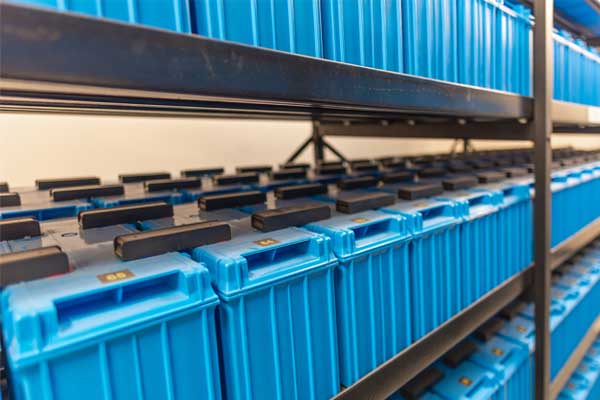 The number of batteries comes down to what you want to power when the power is out. Anything that deals with heating and cooling, or cooking are going to be very intensive power loads. Practically speaking I’d suggest not trying to power them from batteries, but have an on-demand generator.
The number of batteries comes down to what you want to power when the power is out. Anything that deals with heating and cooling, or cooking are going to be very intensive power loads. Practically speaking I’d suggest not trying to power them from batteries, but have an on-demand generator.
Your fridge, freezer, ceiling fans and lights (if they’re LED), modern TVs, and mobile electronics (phone, laptops, tablets) will be a moderate load and can reasonably be powered with a larger battery set. This setup is a really practical approach to battery backs because it keeps your food cold, a fan going and entertainment and communications ups when the power goes out.
If you want to go off-grid completely and rely on your batteries as your main energy source, I would say you’ll need anywhere from eight to 15 batteries. As an off-grider who lives in a tiny house, my system uses 12 batteries as my main source of energy and I have been satisfied with that.
How Long Do Solar Panel Batteries Last?

Generally, solar batteries last anywhere between five and 15 years. However, different battery types are going to have different lifespans.
Lithium-ion batteries will last the longest, typically 10 or more years. Flooded lead acid batteries can have a lifespan anywhere from three years all the way up to 12 years, depending on the manufacturing process. AGM batteries have the shortest lifespan at about three to five years.
Solar Battery Types: Choosing The Best Solar Battery

Once you decide to back up your solar panels with batteries, next up is determining which type of batteries to use. There are advantages and disadvantages to each type, but these are the basics I believe you should know about each type when trying to make your choice.
Lithium-ion Batteries

Lithium-ion batteries are typically used in laptops and cellphones, but they’ve been used more and more lately as solar power battery banks. Lithium-ion batteries are one of the more expensive kinds out there, but the advantages tend to justify the higher price tag, particularly as their prices come down.
The drawback with using lithium-ion batteries is that they require a special charging process which will need to be followed exactly if you are using a solar panel to charge it. On the other hand, lithium batteries can handle deeper discharges, so you need less overall capacity than you would with a comparable lead-acid battery bank.
The biggest draw for me is that they are a sealed battery, so you don’t have to worry about topping off with water like I do with my lead acid batteries.
Lithium Battery Advantages
- Longer lifespan
- Faster charge
- No maintenance
- Efficient power usage
- Deeper discharges
- No off-gassing/ventilation


“We recommend Lithium-ion batteries for home storage. There are a couple different lithium-ion chemistries, but the chemistry that has emerged as the best mix of price, reliability, safety and ability to cycle is lithium iron phosphate.”
– Matt C., EnergyPal
Flooded Lead Acid Batteries

Flooded Lead Acid batteries (FLA) are the most common batteries used for off-grid solar setups. These batteries are designed to handle daily charge cycling and work well for folks who like to be hands on with their system.
Back when I bought my batteries, lead acid batteries were the way to go with solar panels. At that time, lithium-ion was very expensive, so lead acid was the only reasonable option. I use twelve Trojan L-16 6v 370 AH Flooded Lead Acid Batteries in my setup.
They do require a little bit of extra maintenance, but for me, the low price and high efficiency is worth the extra work. I tend to like being hands on with my house maintenance because I know I can do it and like to have that autonomy, but if that’s not you, some of the other options may be the better move.
Lead Acid Battery Advantages
- Most affordable
- Recyclable
- Easy to dispose of
- Highly reliable
- Prevents overcharging

One main thing to note with flooded lead is that the plates of every cell in the battery must be submerged in water in order to keep working (this is where the “flooded” part of the name comes from).
You’ll need to add water at least every three or so months to keep the plates submerged, but I would recommend checking on them once a month to make sure they are doing their thing.
AGM Batteries

AGM stands for absorbent glass mat batteries. The glass mat technology is what allows this type of battery to be spill proof. The biggest difference between AGM batteries and standard lead acid batteries is the level of maintenance they require.
AGM batteries are completely sealed, and you’ll never have to check water levels or deal with expelled gas like you do if you choose to use the lead acid route. AGM is a great option is you don’t want to spend a ton of money and also don’t want to constantly check in on your panel system.
AGM Battery Advantages
- Inexpensive
- Light weight
- Spill proof
- Non hazardous
- Self-contained
- Handles temperature changes
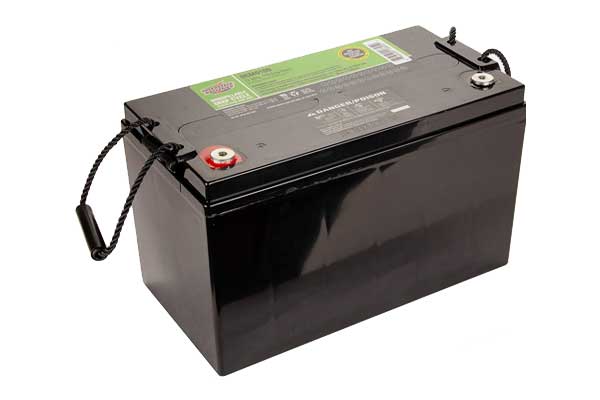
Tesla Power Wall

The Tesla Power Wall is kind of in its own category when it comes to solar battery backups. It’s not just a battery, but an integrated battery system that stores your solar energy and protects your power when the grid goes down, as any battery backup can do.
It’s an extremely popular choice because the system is so intricate and tends to be fail proof. There are many reasons people love this battery brand; it’s all the rage in the modern solar energy world.
One of the main reasons people choose to go the Powerwall route is that it has one of the highest efficiencies and reliability as far as solar battery systems go. The major downside? It’s expensive.
Users argue whether or not the Powerwall is worth the investment in the long run. When you break it down, you’ll net $358 in annual savings and pay off the Powerwall in 31 years. This means it would likely take four times the warranty period for the Powerwall to actually pay itself off.
For some, the high quality is worth the expense. For me, I went with a more affordable option that still gave me good battery life, charge, and efficiency for my solar panel system.
Tesla Power Wall Advantages
- Saves money over time
- Increases panel efficiency
- Supports larger loads of power
- High efficiency
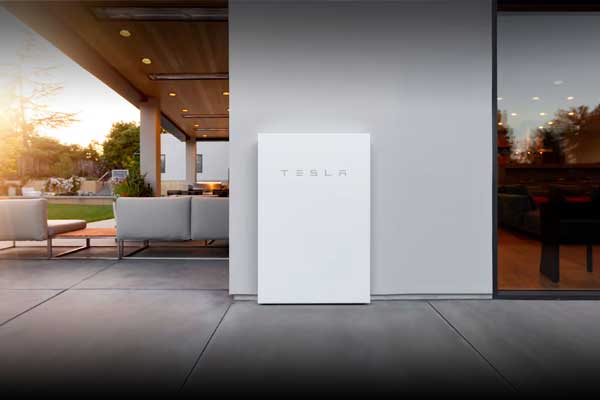
Another drawback with Tesla is that there are often long wait times with the supply chain, and it’s not yet available in every area. If you’re in no hurry, this isn’t a concern, but if you’re trying to get your system ready fast, you may want to go another route.
Check out these brands if you’re looking for a similar integrated battery system, but don’t want to wait as long as you would for Tesla’s installation:
Your Turn!
- Do you want battery storage for your solar panel system?
- How many batteries will you need in your solar battery backup?





Hi Ryan, Thank you for the crash course in solar power. This really gives me something to think about and I learned a lot from your article. Hoping to go tiny in the next year and this truly gives me the incentive to move forward.
Blessings.
Ryan, thank you for passing along your knowledge. Informative and very helpful. This will definitely help in our decision process on what kinds of solar equipment we will need.
With better quality control, the Tesla chemistry is the same as those that burn. Not good to put in the garage under the kid’s bedroom. Enphase will not burn, but has lower current output. It took a third 10 kWh battery to get the A/C started. It might have worked with a delayed start on the A/C, but I did not want the extra hardware. The Powerwall would likely have been able to start it with only two.